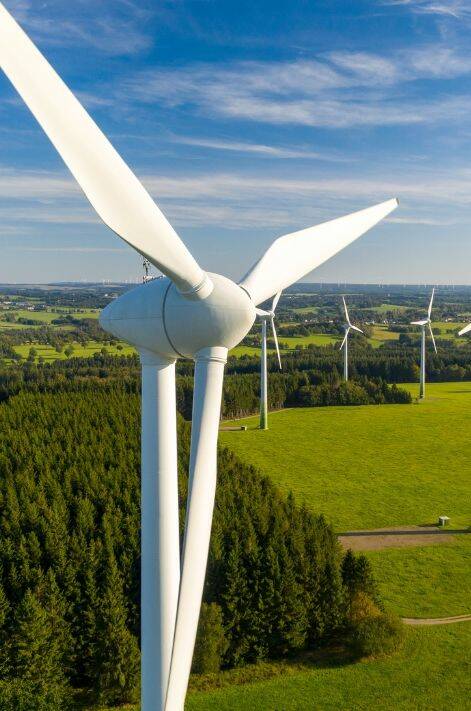
On environment, it’s about understanding, assessing, and securing the correct permits for large infrastructure projects and managing projects in a way that recognises and navigates potential points of conflict. Competing needs, such as national energy security, local opinion and nature protection, need to be taken into account. The level of infrastructure needed inevitably brings projects close to areas that are vital for biodiversity, from the seabed to Sites of Special Scientific Interest (SSSIs). Our teams plan routes and siting to avoid as many of these as possible, factoring in biodiversity net gain, and working alongside organisations and local communities. It’s also about factoring in social value sustainability, circular economy and deployment of local skills into decisions and approaches.
“We can deliver the project management, but also the people on the ground to undertake or manage survey work.
We review and maximise survey findings for environmental impact assessments but also advise on survey strategy to build robust evidence base that would also appeal to clients.”
Nicola Riley, Director – Energy, Offshore Wind, WSP
On planning, we have over 200 chartered planners across the business – allowing us to rapidly mobilise resource and expertise to where our clients need it. That resilience and agility has allowed us to deliver 25% of all large national infrastructure projects. An increasing number of these are first of their kind projects where, due to the use of new technologies, our teams are negotiating projects that have never before been consented.
“We must make sure that complicated schemes are understandable – we have to take the local communities with us on the journey. Digital is key but we’re also still going out to do consultation events to make sure we’re really reaching everybody.”
Lara Peterson, Associate Director, Infrastructure Planning, WSP
On environment, it’s about understanding, assessing, and securing the correct permits for large infrastructure projects and managing projects in a way that recognises and navigates potential points of conflict. Competing needs, such as national energy security, local opinion and nature protection, need to be taken into account. The level of infrastructure needed inevitably brings projects close to areas that are vital for biodiversity, from the seabed to Sites of Special Scientific Interest (SSSIs). Our teams plan routes and siting to avoid as many of these as possible, factoring in biodiversity net gain, and working alongside organisations and local communities. It’s also about factoring in social value sustainability, circular economy and deployment of local skills into decisions and approaches.
“We can deliver the project management, but also the people on the ground to undertake or manage survey work.
We review and maximise survey findings for environmental impact assessments but also advise on survey strategy to build robust evidence base that would also appeal to clients.”
Nicola Riley, Director – Energy, Offshore Wind, WSP
Engineering – the science, technology and thinking behind what we deliver for our clients. We have a strong heritage in gaining experience in core and early-stage technologies. This not only supports the work we do around innovative technologies, such as hydrogen and carbon capture and storage, and helping clients commercialise new technologies, but also in transitioning legacy infrastructure to more sustainable energies and systems. Our multi-discipline engineering skills support power generation, transmission and decarbonising existing assets, for example the transition of natural gas pipelines to hydrogen, opening huge markets opportunities.
“Heavy emitting industries such as cement can’t decarbonise overnight, carbon capture has to play a role. We offer the technical and project management skills to not only implement those projects, but also help develop technologies, evolve designs and advise how they are commercialised.”
Prashant Thapar, Associate Director, Thermal Transition, WSP

